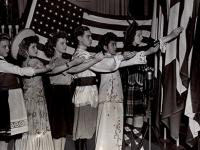Answer: The United Nations
In late 1945, the charter of the newly established United Nations was ratified. But where would this new organization have its headquarters? It very nearly could have been Philadelphia.
The United Nations favored a location in the United States, particularly after the demise of the European-centric League of Nations. Several cities threw their hats into the ring, including Philadelphia, San Francisco, New York, Boston, New Orleans, and Chicago, along with Newport, Rhode Island, and tiny Tuskahoma, Oklahoma (arguing it was at the literal center of the nation.)
Many argued that there was no better place for the United Nations than Philadelphia—the birthplace of freedom and democracy. Proposed sites included a northern portion of Fairmount Park, west of the Schuylkill River, and an area in Northwest Philadelphia encompassing portions of Roxborough and Gladwyne. Mayor Bernard Samuel urged the United Nations Headquarters Committee to choose Philadelphia in a Philadelphia Inquirer editorial published on December 29, 1945, saying “nowhere else than at Philadelphia could the United Nations Organization find such great and constant inspiration for the fateful labors it is called upon to perform.”
The race heated up in 1946 when the committee’s top choices of Boston, New York, San Francisco, and Philadelphia ramped up their respective cases, showing off the best of what their cities had to offer and railing against their competitors. But then, in late 1946, news broke that John D. Rockefeller Jr. had offered to buy property in New York City along the East River and give it free and clear to the United Nations. Shortly after learning of Rockefeller’s offer, the committee voted 33 to 7 in favor of New York City. Thus ended Philadelphia’s bid to become the home of the United Nations.
HSP has a small collection of Dr. John J. Herndon's papers (#1481) that document the efforts to make Philadelphia the headquarters of the United Nations.

